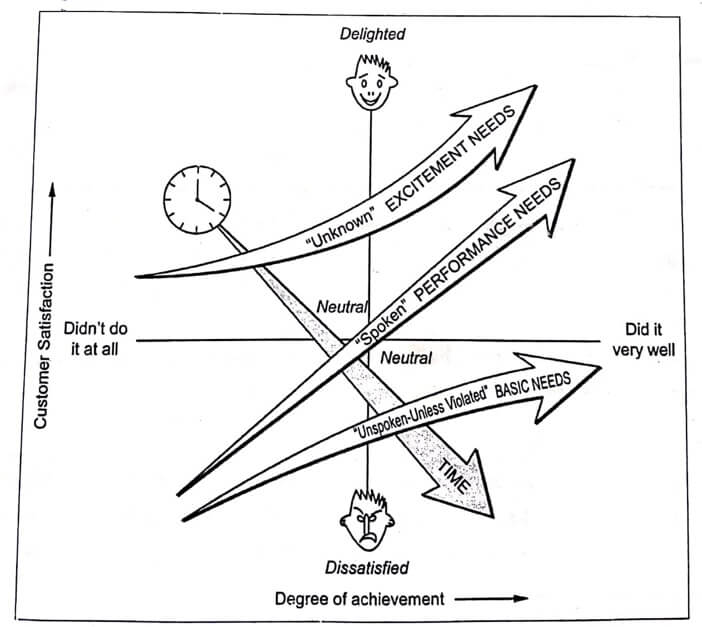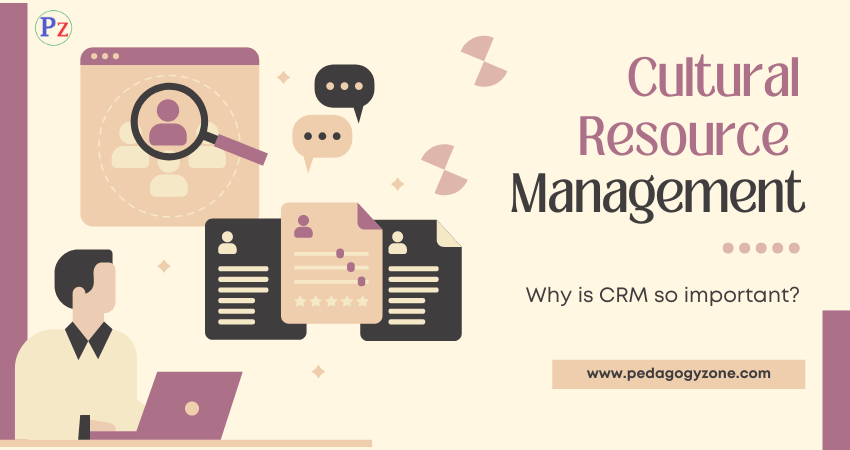Kano Model of Customer Satisfaction (Understanding Customer Needs)

✔ The Kano model is a useful tool in understanding customer needs (Collect Customer Needs).
✔ The kano model of customer satisfaction classifies product attributes based on how they are perceived by customers and their effect on customer satisfaction.

Fig 1.1 Kano model
The Kano model is useful for:
- identifying customer needs;
- determining functional requirements;
- concept development; and
✔ analysing competitive product.
✔ The Kano model, shown in Fig. 1.1, categorises customer needs into three categories:
|
A competitive product meets basic needs, maximises performance needs, and includes as many ‘excitement’ needs of the-customer as possible at a cost the market can bear.
1.Basic Needs
✔ Basic needs are those get a company in the market; they are not spoken unless violated.
✔ For example, at a hotel, we don’t ask for a bed, we expect it to be there. If there is no bed, then we would speak the need (after it was violated).
✔ Basic needs, no mutter how well done, can at best make the customer neutral. Continuing with our hotel example, if there are 3 beds in the hotel room and you are traveling alone, that does not make you any happier than if there was one bed.
✔ Sources of basic needs include complaints, industry standards, what your competitors are doing, and your own product expertise.
2. Performance Needs
✔ Performance needs are known as those that keep a company in the market. They are spoken by the customer and considered when purchasing decisions are made.
✔ Performance needs make the customer happy or unhappy, and the customer’s happiness is proportional to how well the performance needs are met.
✔ The price for which customer is willing to pay for a product is closely tied to performance attributes of the product.
✔ For example, customers would be willing to pay more for a car that provides them with better fuel economy.
✔ Performance needs can be gathered by market research, focus groups, surveys, clinic, interviews, and by contextual enquiry (asking questions while observing the product in use).
3. Excitement Needs
✔ Excitement needs are those that afford the greatest opportunity in terms of becoming a market leader or innovator.
✔ Like basic needs, excitement needs are unspoken. But, unlike basic needs, which are expected and known, excited needs are beyond customer expectations. Thus the excitement reasons are generally unknown and difficult to uncover.
✔ Excitement needs are pleasant surprises, leap improvements and sources of customer delight. As such, if an excitement need is not fulfilled, it does not impact customer satisfaction. If an excitement need is fulfilled in any way, then there is movement on the curve towards increased customer satisfaction.
✔ For example, the ‘table top’ wet grinders with ‘tilting’ facility that enhanced the comfort of the users.
✔ Some of the techniques used to uncover the excitement needs include looking upstream and downstream in a customer’s process, evaluating how a product has evolved with time, looking for unconventional uses of the product, and involving people from outside the industry.
| Read More Topics |
| Mention the importance of customer retention |
| What do you mean by service quality? |
| Who are internal and external customers? |




